Most of my tomato plants are being grown as Cordons, in other words tall and slim. For this method it is traditional to support the plants with a vertical stake or cane, and to remove the plant's side-shoots in order to stop it going too bushy. Like this:-
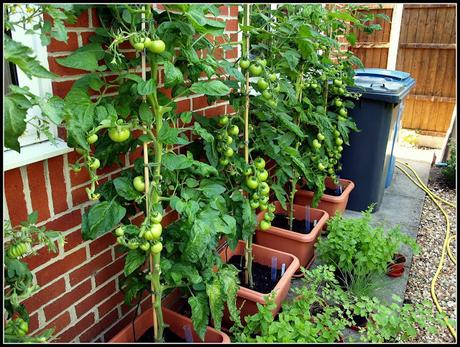
Well, that photo was taken in August (2103), so my plants are nowhere as big just yet, but they were still beginning to flop away from the canes, like this one in the next photo.

So they all got tied-in, using 2 or 3 turns of soft string to secure them to the bamboo canes. I always tie them fairly loosely, to allow for the expansion of the main stem as it grows.
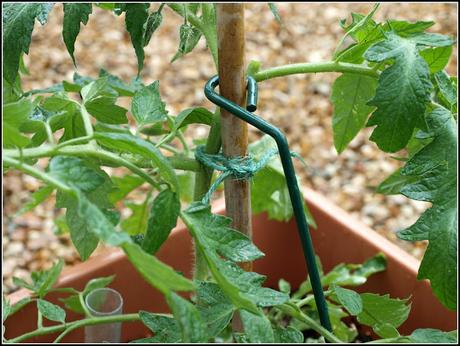
The plants were also in need of side-shooting. In the so-called "axil" between the stem and each leaf a new shoot forms.
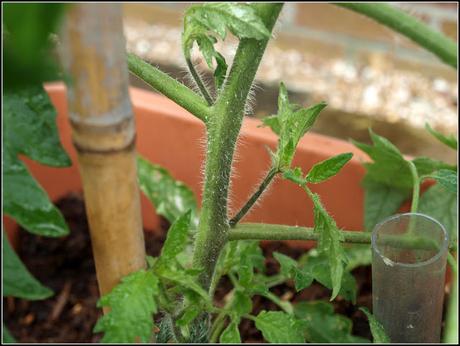
Before removing the side-shoots
Left to its own devices therefore, a tomato plant will become very bushy, but for the cordon method this is not desirable, so they are removed. This ensures that the plant's energy is put into the main stem and the flower/ fruit trusses that grow directly from it.

After removing the side-shoots
End result - a tidy, slim plant, well secured to its support:

Most of my plants are forming their first truss of flowers now, so things are going according to plan so far. No sign of the weedkiller contamination that ruined my crop last year (fingers crossed!).
Here are the plants, lined up against the wall of our house. Hopefully I will be able to re-distribute them into one single rank in a week or two, when some others things are ready to move elsewhere.
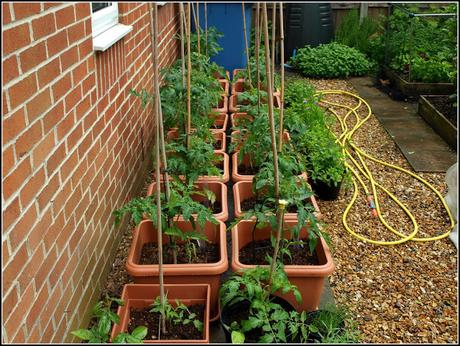
On a slightly different note, here is a tip I picked up from Jo at The Good Life. Although many of my tomato containers are now purpose-made ones complete with their own "saucers", not all of them are, so if you haven't got saucers you can use seed-trays, (not the ones with drainage holes in, of course!), like this:
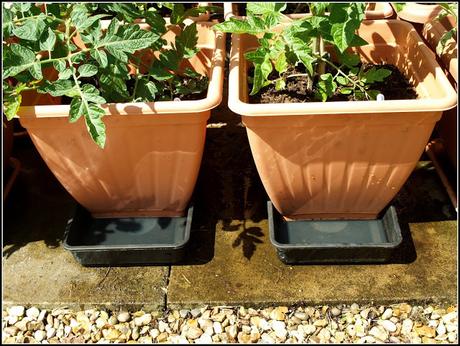
Doing this makes it a lot easier to see when the pots need watering - if the tray is dry, add water; if not, don't! Pouring the water into the tray is also better than pouring it on the top of the compost. If you pour it on top, some of the water will evaporate before it reaches the plant's roots.
